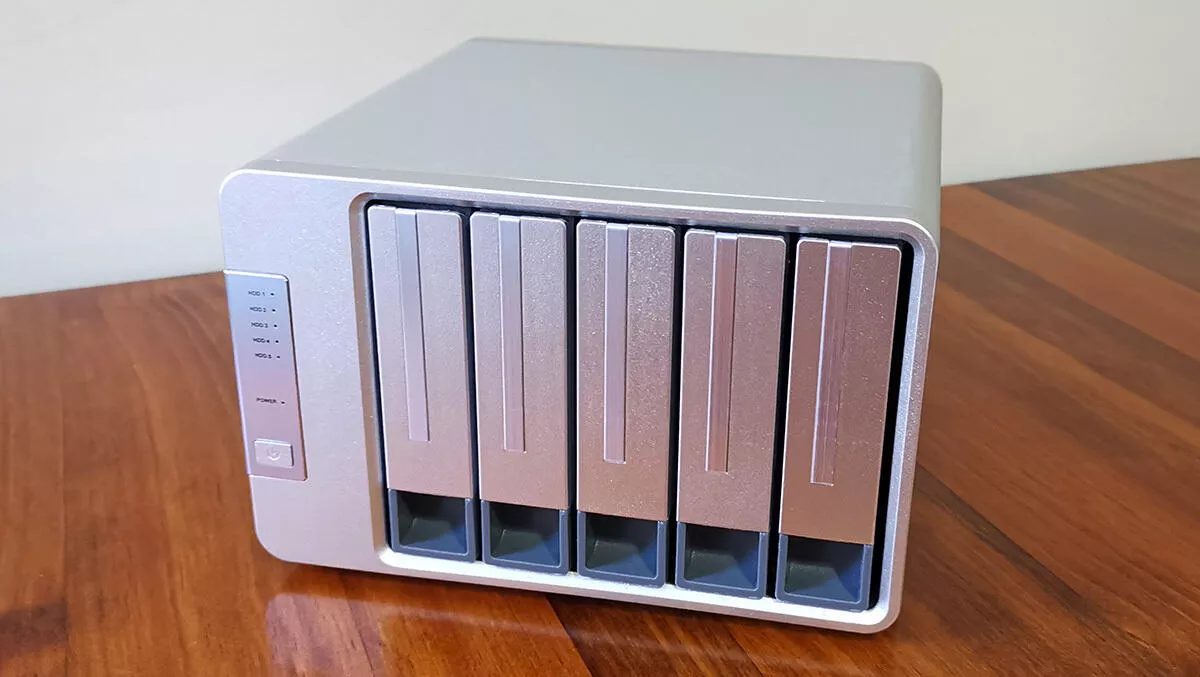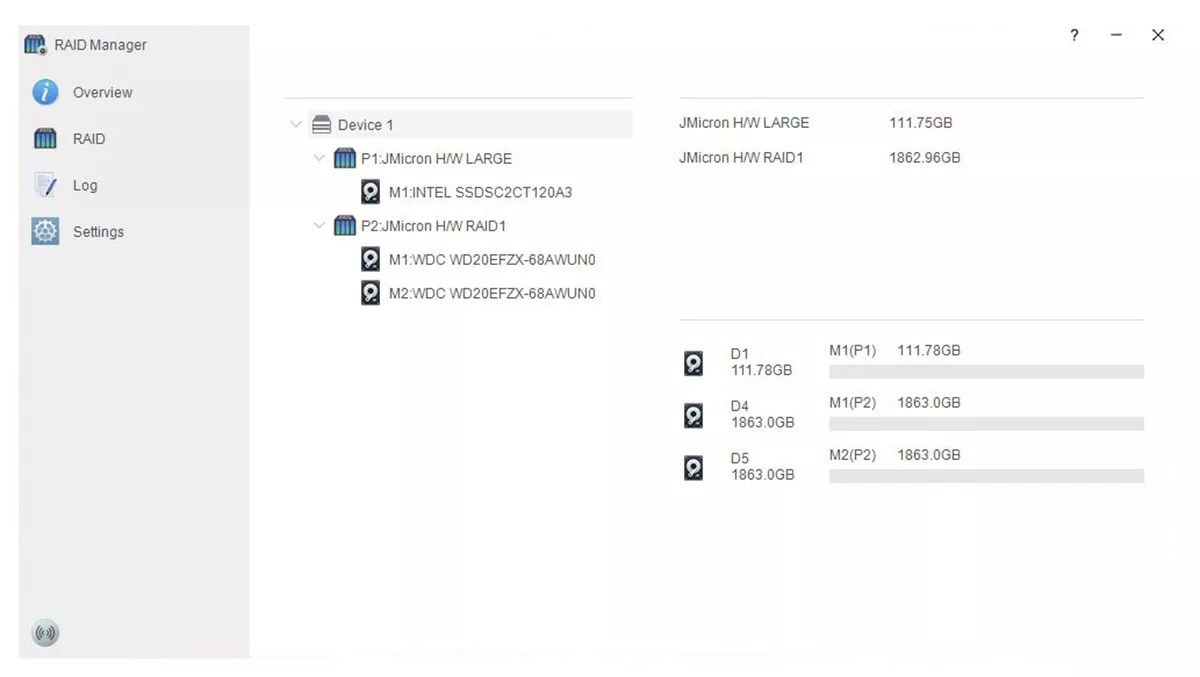
Hands-on review: TerraMaster D5-300 Raid Direct Attached Storage
RAID, Redundant Array of Inexpensive Disks, is a data storage virtualisation technology that has been around for decades. Whilst the term was first coined in the 1980s, some aspects of the technology originated in the 1970s.
The idea is to use multiple hard drives to speed up data access and/or build in redundancy if a drive fails to avoid data loss. Most PCs can run hard drives in a RAID setup, but few are configured to do so and there's a good reason for this. But it is something that you should consider.
The main reason why your PC likely doesn't have drives set up using RAID technology is that you need more than one hard drive to do so, preferably identical. For a decent RAID setup, you ought to have more than three identical hard drives. This takes up space. More importantly, from your PC manufacturer's point of view, those extra hard drives don't necessarily mean extra storage space.
With the TerraMaster D5-300 users can set up a RAID array with up to five hard drives connected to a PC or Mac via a USB 3.1 Type-A cable. The D5-300 can be used for several different RAID levels, depending on requirements. The unit can also be used to house up to five drives working normally in JBOD (Just a Bunch Of Disks) configuration, as your normal internal PC arrangement.
The silver chassis of the D5-300 is a robust unit with five drive caddies at the front. On the left side, there's an on/off button above which are the five drive status indicator lights. At the rear, there are two fans to keep things cool.
The device does not come with any hard drives installed. Up to five drives can be installed, these can be 3.5" or 2.5" traditional hard disks or SSDs. For RAID configurations, I'd recommend that identical drives are used.
Installing drives is easy. The caddies can be easily unclipped and the drives screwed in place, using the included screwdriver and screws (for both 2.5" and 3.5" drives). Once the drives are screwed into the caddies, they are inserted back into the chassis and clipped into place. There are no cables or connections to worry about.
To configure the D5-300, TerraMaster's RAID Manager application needs to be downloaded from the company's website. The app is simple to use you just select the RAID configuration required and the drives that you want to use. As well as JBOD, the D5-300 supports RAID 0, RAID 1, RAID 5, and RAID 10. It can also be used with just one signal drive, as well as two ran together creating a clone drive.

The simplest RAID level is RAID 0, which the D5-300 can set up if more than one drive is present. RAID 0 combines the drives into one volume by striping data across the physical drive. This can give the benefit of faster data access as it can be read from multiple drives at the same time. You also get the combined amount of storage space from all the drives in the array. The downside is that there is no redundancy. This configuration is used when performance is important, but data loss is not a concern.
RAID 1 creates a mirrored copy on a second drive. The array will continue to function as long as one drive is operational. This means that even if one drive fails data is not lost. This configuration halves the amount of storage space of the drives in the array to create redundancy. Data transfer speeds will be at that of the slowest drive in the array. This is the easiest 'proper' RAID array that you can use, needing only two drives.
Requiring at least three drives to be installed in the D5-300, RAID 5 offers both redundancy and faster data transfer speeds. Storage space is reduced by about 5-10% as parity information is distributed throughout the array. The parity data can be used to calculate the lost data in the event of a single drive failure.
RAID 10 is what is known as a nested RAID level combination of RAID 1 and RAID 0 (RAID 1+0=10). It's a RAID 0 array of mirrored drives. This level requires a minimum of four drives. The configuration should provide better data throughput and latency than other RAID levels, making it best suited to heavy input/output applications.
Once I'd set up the RAID array using the RAID management tool, I opened Disk Management in Windows 10. Here I was asked to initialise the RAID array (as one drive), as you need to with all newly installed drives. Once initialised I was able to format and label the RAID drive ready for use.
For my review, I used NAS drives, but you could use any drive, including solid-state drives, if you wish. NAS (Network Attached Storage) drives are enterprise-level drives designed for 24/7 usage and are a bit more robust than consumer drives. It is also possible to have more than one drive configuration in the D5-300. Removing one of the NAS drives (which I'd borrowed from my media server), I inserted an old 120GB SSD into the spare caddy and got it running in JBOD configuration in tandem with the RAID 1 array.
Being a separate unit, configuring and reconfiguring the TerraMaster D5-300 is easy and pretty idiot-proof. When reconfiguring RAID arrays in a PC, I've always been wary of accidentally configuring the wrong drives and losing all my data. The RAID manager software walks users through the process with the appropriate warnings that data will be lost on the reconfigured drives. The D5-300 can be easily disconnected from one PC and connected to another giving instant access to the stored data.
I am puzzled as to why the D5-300 has a USB Type-C socket on the actual unit but comes supplied with a USB Type-C to USB Type-A cable for connecting to your computer. The instruction manual also states that users should only use the cable provided to avoid data loss. The option to connect to my PC via a USB Type-C socket would have been nice.
Nevertheless, connected to the PC, the D5-300 worked as it should. It provided extra storage space in the various RAID configurations without any issues.
The TerraMaster D5-300 is simple to use and offers users a robust and very easy-to-configure way of providing a RAID storage solution for critical data and backups. If you a looking for the security of a simple to use RAID system for your data, the TerraMaster D5-300 is certainly worth looking into.


